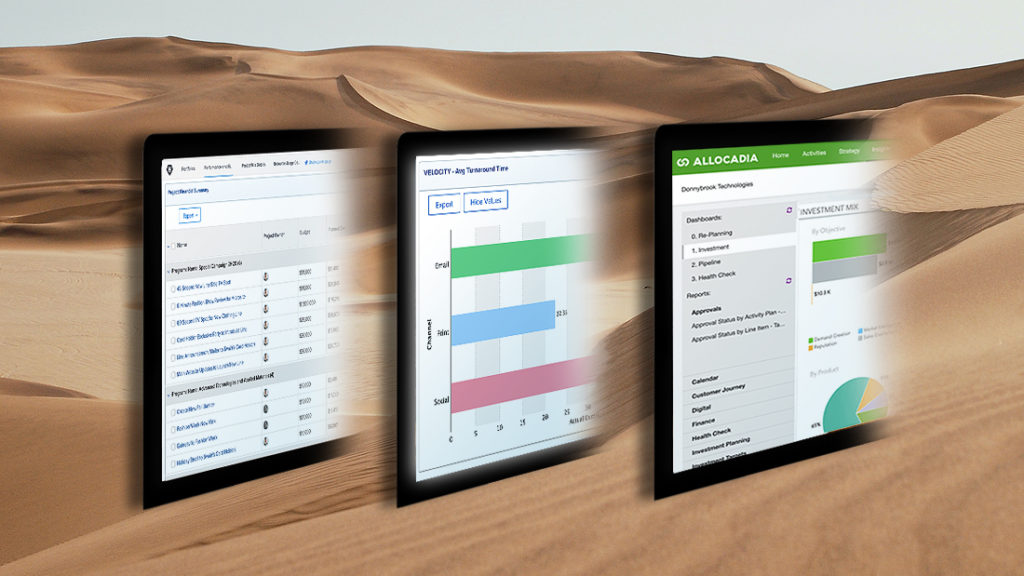
Marketing has their tools. Sales has theirs. The enterprise is full of technology designed to manage various functions within the organization. That’s the good news.
On the flip side, having many systems means executive-level metrics often fall through the functional seams. With the pressure of the new normal, the CFO has recognized that Sales and Marketing leaders are not aligning on common metrics to inform their decision making.
McKinsey highlights that the CFO is putting other executives on notice: “The financial-planning process … presents an opportunity to turn hard-earned lessons from the COVID-19 pandemic into an enduring exercise in linking strategy to value.” Adding that finance teams, as well as teams across the enterprise, “must be transparent about the new kinds of KPIs that will be most relevant in their 2021 budgets and financial plans.”
For some companies, solutions in place are impacting productivity in an important way. People are getting more done faster. In Marketing, there’s way less time spent searching for images, sending out emails, allocating budgets and managing workflow. There’s now more agility built into to everything marketers do. The systems are driving performance metrics—exactly what they were intended to do. In Sales, CRM and other tools facilitate their processes.
But for the majority of companies, something big is missing. What’s lacking are unified metrics that enable a business to rapidly adjust investments and continuously tweak personalization across customer touch points.

“Rather than searching for the perfect metric, organizations must look to create the right suite of metrics that support decisions across all aspect of the buyer’s journey”
– Sam Melnick, VP, Marketing Insights; Growth, Allocadia
The ability to collect, measure and analyze information across Sales and Marketing platforms is critical to keeping pace, for it is all about pace. For B2B firms, Sales and Marketing too often work in silos and each have their own metrics. Leaders do not have KPIs to visualize the full picture. Considering that the CMO is responsible for generating leads, and the CSO is responsible for closing those leads, it’s imperative to have the means to measure the value of a Sales lead, and Marketing’s investment return.
The need for speed is not new, but is heightened for sure. Another recent McKinsey survey found that organizational speed is essential for outperformance especially during periods of unprecedented change. Silo-ed operations translate into inability to determine smart strategy. The absence of rapid decision making is stifling an organization’s resilience, profitability and growth.
The survey findings point to the importance of “building faster decision-making mechanisms, improving internal communication and collaboration, and increasing the use of technology.”
Zee Jay maintains that rapid, confident, informed decision making is essential to competing successfully in today’s new normal. And our team knows from first-hand experience that it’s possible to achieve using technology already in place.
In previously published blogs, we’ve established the characteristics of the new world in which we live. In summary, for the foreseeable future, Sales and Marketing leaders will need to:
Fortunately, most marketers already have more technology under the hood than they will ever need, but if not integrated and reported properly, insights will not reveal themselves to the powers that be, and adjustments in programming will take too long to execute for them to be relevant.
To integrate and visualize properly, a new class of codeless platforms have emerged to now make this possible with only modest investment. These tools include IPASS connectors (like Workfront Fusion or Workato) and BI applications marketers likely already have (like PowerBI or Tableau).
Acknowledging Sales and Marketing each have their own metrics, they are often suited for front line managers to work in their silos, and true KPIs remain undefined. Getting full value out of proposed and implemented components of the Sales and Marketing stack depends on a collective metrics framework.
The forum and authority to deliver timely, transcendent information in the form of executive dashboards is key to eliminating the finger pointing going on. When Marketing complains “you don’t follow up on our leads,” and Sales replies with “the leads are bad,” shared KPIs stop the bickering fast.
Read this previous blog for more about how a Marketing/Sales judicial branch, supported by shared metrics, can align the two organizations.
A strong analytics foundation should start at the highest level, with a debate about where to take the analytics. There is no shortage of best practices in the world. At Zee Jay, we hold by the well-established analytics framework and value tree as a basis to align leadership thinking.
IMHO, it is more about change management than the technicalities. Key steps to bringing transcendent executive dashboards to life include:
In fact, the sands are always shifting. That’s the point. Our business environment is turbulent, and systems and organizations are in perpetual change. But this is no reason to delay putting in place the tools that give you visibility. It is this visibility that will help Sales and Marketing navigate the changing landscape, with the judiciary branch guiding the way.
The end of the year is approaching, but Marketing leaders can get a lot accomplished in the three-plus months that remain.